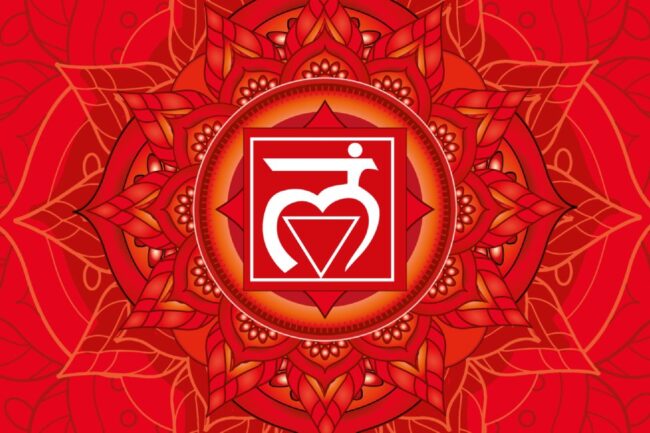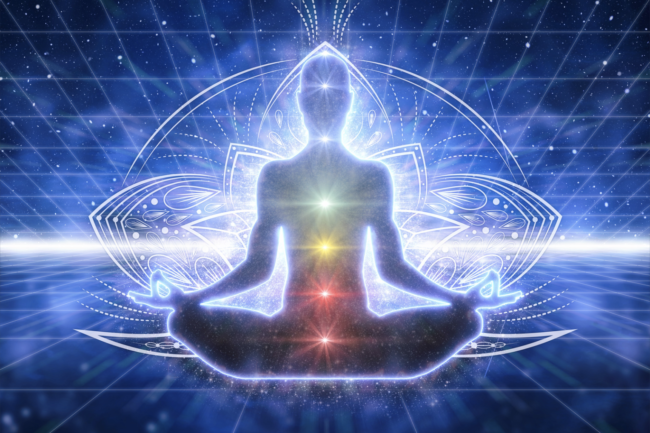 The heart chakra, known as Anahata. The heart chakra is located in the center of the chest, near the physical heart. It is associated with the color green and is often depicted as a six-pointed star (a double triangle) within a circle. It color is green. The heart chakra is considered the bridge between the lower three chakras (associated with more material and earthly aspects) and the upper three chakras (associated with higher consciousness and spiritual development).
The heart chakra, known as Anahata. The heart chakra is located in the center of the chest, near the physical heart. It is associated with the color green and is often depicted as a six-pointed star (a double triangle) within a circle. It color is green. The heart chakra is considered the bridge between the lower three chakras (associated with more material and earthly aspects) and the upper three chakras (associated with higher consciousness and spiritual development).
In the poetic wisdom of Rumi, the phrase “you have to keep breaking your heart until it opens” transcends the realm of the physical heart. Rather, it delves into the profound emotional journey familiar to many. Heartbreak, while agonizing, has the potential to be transformative. Through its crucible, we unearth profound insights.
Rumi’s words point to a truth: heartbreak is not a mere wound, but a catalyst for growth. Each heartbreak can serve as an alchemical crucible, refining our understanding of love’s complexities. With every fracture, we gain an opportunity to deepen our capacity for both giving and receiving love, revealing a more profound connection to our inner selves and others.
Balancing the Heart Chakra
Visualization stands as a potent key to unlock the depths of the heart chakra, especially when complemented by a mudra – a symbolic hand gesture.
Begin by positioning your index finger at the thumb’s base. Follow this by placing the tips of your middle and ring fingers onto the thumb’s tip – a mirrored formation with your other hand. As you sit cross-legged, hands by your sides, close your eyes. Envision elements that evoke an expansive heart: a cherished person, a place of significance, or the radiant magnetism welling up from your core. This blend of visualization and mudra conjures a profound synergy, inviting the heart chakra’s blossoming.

 The Manipura, or solar plexus chakra, resides near the abdominal region, where bodily digestion occurs. Its color is yellow. It serves as a hub for deciding what knowledge to absorb and what to discard. When this chakra attains balance, digestion operates seamlessly, and our thoughts cease to restrict our potential. Intuition becomes a reliable guide, and emotionally charged conversations no longer induce physical discomfort. Balancing the solar plexus chakra opens pathways to undiscovered information, unveiling realms of the unknown that were previously hidden from us. This newfound awareness propels us toward boundless horizons, fortifying us with the bravery, determination, and assurance to navigate uncharted territories.
The Manipura, or solar plexus chakra, resides near the abdominal region, where bodily digestion occurs. Its color is yellow. It serves as a hub for deciding what knowledge to absorb and what to discard. When this chakra attains balance, digestion operates seamlessly, and our thoughts cease to restrict our potential. Intuition becomes a reliable guide, and emotionally charged conversations no longer induce physical discomfort. Balancing the solar plexus chakra opens pathways to undiscovered information, unveiling realms of the unknown that were previously hidden from us. This newfound awareness propels us toward boundless horizons, fortifying us with the bravery, determination, and assurance to navigate uncharted territories. Sacral Chakra (Svadhishthana): Nestled approximately 2 inches below the navel, the Sacral Chakra embodies the realms of creativity, sexual energy, and emotional connection—both to oneself and others. A harmonious sacral chakra releases a captivating blend of warmth, confidence, and magnanimity. Conversely, an imbalanced sacral chakra may pave the way for emotions such as fear, overwhelm, depression, erratic emotional patterns, dwindling creativity, and the emergence of addictive tendencies.
Sacral Chakra (Svadhishthana): Nestled approximately 2 inches below the navel, the Sacral Chakra embodies the realms of creativity, sexual energy, and emotional connection—both to oneself and others. A harmonious sacral chakra releases a captivating blend of warmth, confidence, and magnanimity. Conversely, an imbalanced sacral chakra may pave the way for emotions such as fear, overwhelm, depression, erratic emotional patterns, dwindling creativity, and the emergence of addictive tendencies. Root Chakra (Muladhara): Situated at the base of the spine, this Chakra holds sway over feelings of stability, security, and survival instincts. This foundational energy center, often symbolized by the color red, takes shape during the formative years of 1 to 7, aligning with our fundamental needs.
Root Chakra (Muladhara): Situated at the base of the spine, this Chakra holds sway over feelings of stability, security, and survival instincts. This foundational energy center, often symbolized by the color red, takes shape during the formative years of 1 to 7, aligning with our fundamental needs.